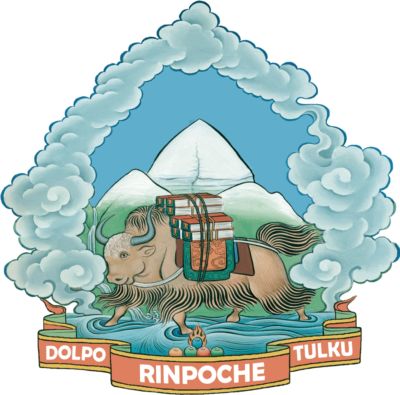We have to answer this question in 2 parts:
- Why did we choose a text written by Longchenpa?
This part illustrates the importance of the legacy of Longchen Rabjam. - Why did we choose this particular text?
(Since Longchenpa has written so many texts about a great array of many different subjects.)
Source of these notes are:
- The answers to these questions: are derived from teachings by Dolpo Tulu Rinpoche.
- We also illustrate this with quotes from the book:
“The Life of Longchenpa, the Omniscient Dharma King of the Vast Expanse”
Compiled and edited by Jampa Mackenzie Stuart, with an introduction by Yangthang Tulku Rinpoche
(2013, Shambala Publications, Snow Lion; Boston & London)
Answers to the questions above:
1. Longchenpa:
Dolpo Tulku Rinpoche described the unicity of Longchenpa’s teaching by referring to the circumstances and the time he lived in. During Longchenpa’s lifetime, there was almost no paper available, and there were no libraries near the retreat cabin in the remote Himalayan region, where Longchenpa lived, meditated and taught. Nevertheless, more than 300 text were composed by him.
Yangthang Tulku Rinpoche writes in his introduction about the meaning of his name:
Longchen means “vast expanse”.
Long, meaning expanse, implies “free from any limitation”.
Chenpo means “great”, “the greatest”. Because he was one who actualized the view greater than any other (…), he is known as Longchenpa.
Rabjam means “inconceivable noble qualities”, that all of the enlightened qualities of body, speech, and mind have been completely developed, particularly those of knowledge, loving-kindness, and potential.
Many very great recent masters as well, such as Patrul Rinpoche, Jamgon Kongtrul Rinpoche, and Ju Mipham, all received the blessings of mind being resolved into the vast expanse through Longchenpa.
2. This particular text:
- The Precious Treasury of Philosophical Systems (Drupta Rinpoche Dzo), is one of the Seven Great Treasures. This book offers in eight chapters a presentation of the various philosophical tenets of all the yanas of sutric and tantric Buddhism, as well as of non-Buddhist systems.
- Longchenpa thoroughly studied every one of the many Buddhist vehicles and lineages of teachings in existence in Tibet at the time. Through his radiant intellect, in both his teachings and written words he was able to masterfully reconcile the seeming discrepancies and contradictions between the various presentations of the view and the path within the many lineages of transmission. He wrote teaching manuals for each of these traditions. (Many of these texts have been lost.)
- Longchen Rabjam’s works are also known for being able to transfer true blessings just by reading or hearing his enlightened words.
- Longchenpa’s work not only covered the entire range of Dharma, and in particular Dzogpa Chenpo, but also such secular subjects as poetry, plays, literature, Sanskrit grammar, metrics, weights and measures, semantics, and literary composition.
Thubten Legshey/Peter Heuts for Dolpo TulKu Rinpoche, September 2022

